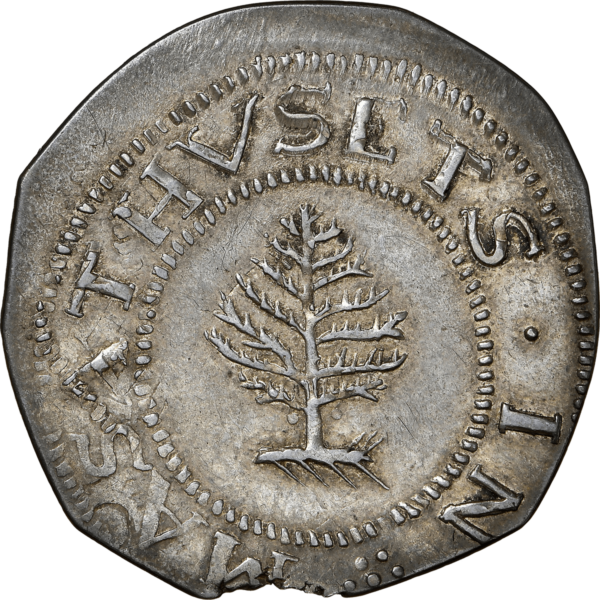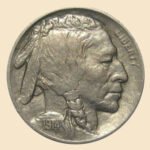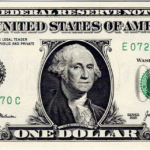Introduction to U.S. Coinage and Currency
The evolution of U.S. coinage and currency is a fascinating journey that reflects the broader economic and social developments within the nation. From its start during the colonial era, the form and role of money have played a crucial role in shaping American society. Initially, the colonies relied heavily on foreign currencies, like the Spanish dollar and British pounds, to ease trade and commerce. The scarcity of standardized domestic currency created challenges in economic transactions, which eventually led to the need for a unified currency system.

English and Spanish coins from the 17th & 18th centuries are often found near old settlements by metal detectors and others digging for constructions or other various reasons.
With the establishment of the United States, the significance of a robust monetary system became increasingly obvious. The Coinage Act of 1792 marked a pivotal moment in American history, as it established the U.S. dollar as the country’s standard unit of currency. This legislation not only standardized coinage but also sought to promote economic stability and growth. The introduction of decimal based coins, like the penny, nickel, dime, and quarter, signified an important step towards crafting a national identity that was distinctive and coherent.
Centralized Monetary Policy
The role of currency extended beyond mere transactions; it became intertwined with concepts of trust and national pride. Paper money, introduced by the Continental Congress during the Revolutionary War, further illustrated the revolutionary ambitions of the fledgling nation. Despite facing many challenges, including hyperinflation and the fluctuating value of currency, the commitment to a centralized monetary policy grew stronger over the years. As the nation transitioned through the 1800s, the continued evolution of both coinage and paper currency not only mirrored economic necessities but also reflected the changing attitudes towards commerce, security, and governance.
Colonial Currency: The Beginnings
The early American colonies relied heavily on barter systems for trade, particularly in the absence of a standardized currency. Goods like tobacco, grain, and livestock served as common commodities for exchange, often leading to complexities when determining value. The lack of a unified currency hampered economic expansion and created practical difficulties for settlers who sought to trade across regional lines.
In response to these challenges, colonies began to adopt foreign coinage, with Spanish and British coins being the most prevalent forms of currency. The peso de a ocho (pieces of eight) became widely utilized due to its silver content and widespread acceptance. Nevertheless, reliance on foreign coinage presented its own issues, including a limited supply and fluctuating exchange rates that complicated transactions.
The Spanish dollar would often be cut into eight pieces, thus the name “pieces of eight”.

Colonial Money Problems
As economic activity increased, colonial governments sought to tackle the growing currency demand by issuing their own paper money. This innovation began in the 1690s, with Massachusetts being the first colony to issue paper currency as a means to raise funds for military expenses during King William’s War. Paper money enabled quicker transactions and helped to mitigate the shortages caused by the limited availability of coins. Nonetheless, the issuance of this colonial paper money was fraught with challenges, including a lack of backing and public skepticism about its reliability.

Colonial Currency – 20 Shillings Massachusetts Note, Series of 1690. The design at the top and wavy cut was an early anti-counterfeiting technique. The Massachusetts colonial seal at the lower left. A similar image is still used on the state seal.
The British trade regulations had a significant impact on colonial currency practices, as they sought to keep control over the colonies’ economic activities. The Currency Act of 1764 restricted the use of paper money, which led to increased tensions between the colonies and the British government. These early experiences with currency set the stage for the complexities of financial systems that would evolve in the newly formed United States. Through barter systems, foreign coinage, and the creation of paper money, the foundations of American currency were laid during this formative period.
The Continental Congress and the Continental Currency
During the American Revolution, the Continental Congress played a pivotal role in the establishment of a unified financial system, primarily through the issuance of Continental Currency. Faced with a dire need for funds to support the war against British forces, the Continental Congress authorized the creation of paper money in 1775. This currency was intended to supply liquidity and help transactions among the colonies. Nonetheless, the introduction of the Continental Currency presented several challenges that would ultimately impact its effectiveness.
Inflation & Depreciation
One of the main issues with Continental Currency was inflation. As the Continental Congress continued to print large quantities of money to finance military expenditures, the value of the currency rapidly diminished. What began as a necessary tool for the revolutionary cause quickly led to rampant inflation, as public confidence in the paper money eroded. Title to goods and services became increasingly obscured, as people began to demand payment in silver or gold rather than the devalued currency. This spiraling depreciation undermined the very goal of creating a stable financial instrument to support the war effort.
January 14, 1779 $40 Continental Currency. The date signifies the day of the Act passage of the Continental Congress, not the actual printing. The design on the left is purported to be one of B Franklin’s.

Tangible Assets Not
Along with inflation, the lack of backing for the Continental Currency further complicated its acceptance. Unlike coins made from precious metals or notes redeemable in gold or silver, the Continental Currency was not anchored by tangible assets. This contributed to the perception that it was an unreliable medium of exchange. Many merchants and citizens were hesitant to accept the paper currency, fearing it would soon lose even more value. The resulting disconnect between financial needs and public trust proved detrimental not only to the war effort but also to the emerging American economy.
In conclusion, the efforts of the Continental Congress to create and implement Continental Currency were met with significant economic challenges. The consequences of inflation and lack of backing highlighted the difficulties of financing a revolution and laid the groundwork for future discussions about the need for a more stable and reliable currency in the United States.
Introduction of Coinage: The Coinage Act of 1792
The establishment of a standardized currency in the United States can be largely attributed to the Coinage Act of 1792. Before this significant legislative measure, the thirteen colonies utilized a hodgepodge of foreign and colonial coins, leading to confusion and inefficiencies in trade and commerce. This complexity underscored the urgent need for a cohesive monetary system as the fledgling nation sought stability and identity.
The Coinage Act of 1792 not only established the U.S. Mint but also set forth a framework for the production and regulation of coinage. The Act designated the dollar as the standard unit of money, thus simplifying transactions by providing a common currency. This decision was groundbreaking, as it aligned with the emerging vision for a national economy that would allow commerce to flourish unhindered by the disparate currencies earlier in use.
The Beginning
Key figures like Alexander Hamilton, the first Secretary of the Treasury, played instrumental roles in shaping the monetary policies of the young republic. Hamilton envisioned a robust economic infrastructure and recognized the importance of establishing a trustworthy currency to promote trade and bolster national confidence. He understood that a uniform currency was crucial for economic growth, ensuring that both domestic and international transactions continue smoothly.
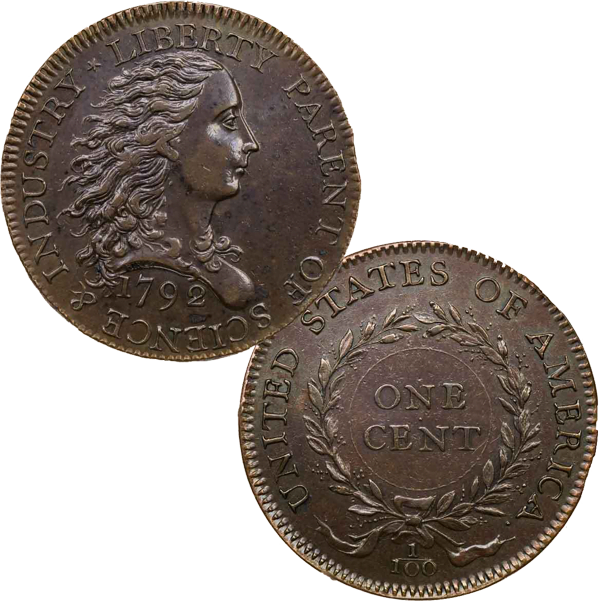
An extremely rare 1792 US coin called a “Birch Cent”. Designed by a man named either Robert Birch or William Birch and manufactured in very small numbers. Washington and Jefferson were purportedly in attendance during it’s minting in the cellar of a Philadelphia resident, John Harper. In 2015, one sold for 2.6 million at auction to a very pleased collector who stated “the history is important. This is our earliest depiction of what we thought of ourselves as a nation.”
The first denominations introduced by the Coinage Act included various coins like the half cent, cent, and other fractional denominations up to the dollar. These coins were designed to show the values of the new republic and featured symbols of national sovereignty, helping to instill a sense of pride among citizens. The Coinage Act of 1792 thus marked a pivotal moment in U.S. history, laying the groundwork for a stable economic framework that would support the nation’s development well into the future.
The Gold Standard and Its Influence
The transition to the gold standard signifies a pivotal moment in the history of U.S. currency, significantly influencing economic stability and international trade. Established in the late 19th century, the gold standard meant that the value of the U.S. dollar was directly linked to a specific amount of gold. This system emerged as a response to the volatility of currency fluctuations and the need for a more stable medium of exchange, ultimately enhancing trust in the American financial system.
The adoption of the gold standard was formalized by the Coinage Act of 1870, which established a fixed gold-to-dollar ratio. This legislation provided a monetary structure that reduced inflationary tendencies linked to fiat currency systems. By requiring that currency be backed by precious metals, it curtailed the government’s ability to issue money indiscriminately, thus fostering a greater degree of economic stability. During this period, inflation rates diminished, which enabled consumers and businesses to have greater confidence in the dollar’s purchasing power.
Global Markets
Internationally, the gold standard facilitated trade by creating a universal benchmark for currencies. Transactions became streamlined as nations engaged in commerce using a common metric for value. This interconnectedness bolstered economic growth and solidified the United States’ position as a significant player in global markets. However, the rigidity of the gold standard sparked debates about its impact on economic policies, particularly during periods of recession, when a fixed money supply constricted monetary policy options.
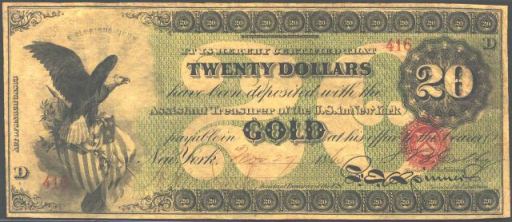
1883 $20 Gold Certificate, one of six known to survive intact
Ultimately, the effects of the gold standard were profound, shaping the trajectory of U.S. currency amid fluctuating global economic conditions. While it fostered stability and growth, it also exposed vulnerabilities, leading to future iterations of monetary policy that sought to balance flexibility with reliability. The legacy of the gold standard remains clear in contemporary discussions about currency and economic strategy, underscoring its historical significance in American finance.
The Rise of Banknotes and Currency Designs
The 19th century marked a significant transition in the world of American currency, as the use of banknotes became increasingly prevalent. Prior to this period, coinage was the primary form of currency; however, the rise of banking institutions led to the introduction of paper money. Banks began issuing their own banknotes as a means to facilitate transactions, with each note representing a promise to pay the bearer a specific amount of gold or silver. This innovation was crucial in addressing the growing need for a more efficient and versatile monetary system.
Competition Ignites Art
The designs of banknotes during this era were diverse and often reflective of the cultural and historical context of their issuance. Early banknotes were typically simple in design, featuring engravings of bank logos, state seals, or portraits of notable figures. As competition among banks increased, they began to adopt more elaborate designs to distinguish their notes from others. This included the introduction of intricate patterns, vibrant colors, and imagery that resonated with the public. The aesthetic of currency not only aimed to attract users but also to promote trust in the financial system.
Counterfeiting Is As Old As Pocket Change
Security features became an essential aspect of banknote design in response to widespread counterfeiting. Techniques such as the use of watermarks, intricate borders, and special inks were implemented to enhance the security of the notes. The establishment of the U.S. Treasury and its subsequent control over currency issuance further standardized these features, which aimed to bolster public confidence in paper money.
Throughout the 19th century, currency played a pivotal role in everyday transactions, facilitating commerce and trade in a rapidly growing economy. As banknotes evolved, they fostered an environment where businesses and consumers engage in financial activities with greater ease, ultimately contributing to the economic development of the United States during this transformative period.
Impact of the Civil War on Currency
The Civil War, which raged from 1861 to 1865, had profound economic ramifications that significantly influenced U.S. currency. As the conflict escalated, the need for a stable and reliable currency became increasingly important. The Union government faced significant financial challenges, resulting in the decision to issue paper money known as “greenbacks.” Issued in 1861, these notes were initially meant to be a temporary solution to the financial needs of the war.

1862 Legal Tender known as a “greenback”. Most original greenback notes were very ornate. Legal Tender notes were payable of all debts but backed by nothing but a promise and known as “fiat”. The modern Federal Reserve notes in our wallets are fiat money.
Fiat Money
Greenbacks were fiat currency, which means they were not backed by physical commodities like gold or silver. This lack of backing raised concerns about their stability and acceptance. Thus, the government suspended specie payments in 1861—meaning that holders of greenbacks would not be capable of exchanging them for gold or silver. This suspension was a necessary step to guarantee continued funding for the war and to supply soldiers with the means to support their families. Still, it also led to inflation and a decrease in the value of the currency. Prices rose sharply, causing hardship for many citizens.
The “Greenback”
After the war, the long-term effects of these decisions persisted. The greenbacks, which were initially met with skepticism, eventually gained acceptance among the public as a valid form of currency. But, the experience of inflation during the war instilled a caution about paper money that influenced economic policies in the next decades. The debates around currency reform continued, weighing the benefits of a stable currency system against the flexibility provided by paper money. This period laid the groundwork for future monetary policies and eventually led to the establishment of a more standardized national currency with the Coinage Act of 1873.
Evolution of Currency Regulations
During the latter half of the 19th century, the regulatory framework governing U.S. currency underwent significant transformation, reflecting the rapidly evolving economic landscape. The establishment of the National Banking Act in 1863 marked a pivotal moment, ultimately laying the groundwork for a standardized banking system. This act aimed to create a uniform currency by introducing national banknotes backed by U.S. bonds, which could be issued by chartered national banks. Before this, the currency was comprised of a hodgepodge of notes from state-chartered banks, often leading to confusion and instability. The National Banking Act sought to mitigate these issues and help a more coherent financial system.
National Currency

A 1929 chartered bank note in a local zip code. Known as “Obsolete Notes” they are out of circulation and collector items now. The chartered number 12977 is all over the small sized note. Many of these chartered banks did not last long and either went under completely or transformed to a different name and management style. The centered vignette is of Alexander Hamilton.
Alongside the National Banking Act, the idea of a uniform currency system gained traction. The absence of a consistent currency had been a challenge for commerce, as different state currencies often held varying values. The creation of national banknotes not only provided a stable medium of exchange but also promoted confidence among the public and investors in the burgeoning national economy. Amidst the economic unrest leading up to the Civil War, regulatory measures were increasingly seen as essential for stabilizing both the financial system and the broader economy.
Federal Reserve System
Moreover, the late 1800s saw the rise of precursor organizations to the Federal Reserve System, laying essential foundations for modern banking regulation. The Panic of 1893 underscored the need for a centralized banking authority to respond swiftly to financial crises. Calls for reform intensified, reflecting the imperative to create a more elastic currency that adjust to the demands of the economy. As a result, discussions around a central banking system gained momentum, ultimately culminating in the establishment of the Federal Reserve in 1913.
Legacy of 19th Century Coinage and Currency
The 19th century signifies a significant period in the evolution of U.S. coinage and currency, with developments that have left an indelible mark on the financial landscape of the nation. The era saw the establishment of a more standardized monetary system which later shaped modern coinage practices and policy. The Coinage Act of 1792 initiated a blueprint for the exchange of goods and services through a regulated currency, a principle that would evolve dramatically throughout the century.
There’s Gold in Them There Hills!!!
During the 1800s, the introduction of various gold and silver coins, alongside the emergence of paper currency expanding beyond the confines of banks, highlighted the transition to a more dynamic monetary framework. The gold rushes of the mid-1800s ushered in an increased reliance on gold coinage, bolstering the money supply and reinforcing the metallic backing of currency. This reliance on precious metals contributed to the establishment of the Gold Standard, which dictated monetary policy well into the 20th century.

Reverse of an Indian Head $10 Gold Coin

And it’s obverse
Moreover, the establishment of a national bank system through the National Banking Acts of 1863 and 1864 marked a pivotal departure from the decentralized banking practices of the earlier decades. This legislative milestone laid the groundwork for a cohesive federal monetary authority, allowing for a more reliable and uniform currency across states. As the century progressed, the intricate interplay between state-chartered banks and federal policies played a crucial role in stabilizing the economy, setting precedents for future regulatory frameworks.
There are twelve Federal Reserve Districts in the United States today.

And Finally
In conclusion, the legacy of 19th-century coinage and currency is clear in contemporary U.S. monetary policies. The shifts in coinage practices and the establishment of national banking systems created a foundation upon which modern financial systems are built. These historical developments not only informed monetary policy in the decades that followed but continue to influence the ongoing evolution of money within the United States. Understanding this legacy underscores the importance of historical context in shaping current economic practices.


